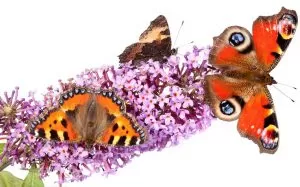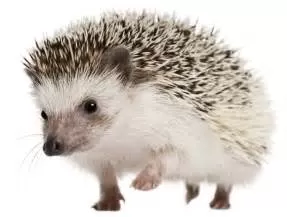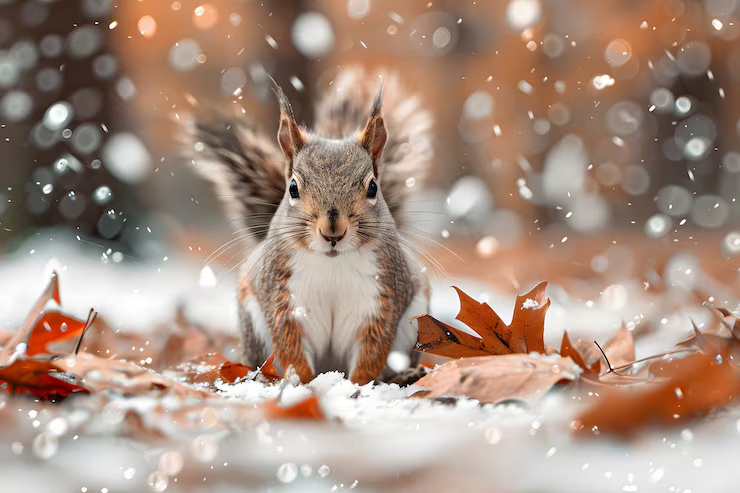Create a Gloucestershire garden for animals, birds and insects..
Colorful butterflies, song birds, RED Squirrels, Hedgehogs and busy insects – wildlife in your Berkeley  Vale, Gloucestershire garden will give the whole family something to watch, listen to and learn about. And not only that, you’ll also be helping the environment by encouraging some of the rarer creatures to take up residence or feed in your outdoor room.
Vale, Gloucestershire garden will give the whole family something to watch, listen to and learn about. And not only that, you’ll also be helping the environment by encouraging some of the rarer creatures to take up residence or feed in your outdoor room.
It doesn’t matter what size your outside space is, or whether you’re out in the countryside or the middle of the urban jungle – everyone can do a few small and pocket-friendly things to invite insects, birds or animals into their garden. Here are our top tips for getting furry, flying or feathered guests to visit your home.
Pick the right plants
Attract bees and butterflies with scented plants that will fill the air with colour and perfume. We recommend herbs, pollinating plants and wildflowers. Buddleja (or buddleia) is a particular favourite with butterflies, so much so that it’s also commonly known as the Butterfly Bush, while lavender, rosemary and thyme are loved by butterflies and bees alike. Both look for open flowers with large heads making sunflowers a top choice as well. Many wildflowers, like marigolds, harebell and cowslips, work well in borders, or create your own meadow (or mini-meadow if space is tight) with our mixed seeds and wildflower turf.
Try to ensure that there’s at least one plant flowering in your garden at any time of the year. This is great for bees, as rather than hibernating,  they simply become less active in colder weather. So encourage them back into your garden on warm, sunny winter days with the promise of food with winter-flowering plants like crocus.
they simply become less active in colder weather. So encourage them back into your garden on warm, sunny winter days with the promise of food with winter-flowering plants like crocus.
Fast-growing annual and biennial plants like sweet peas and foxgloves not only look amazing, but will also encourage pollinating insects – though you will have to replace them each year. Or why not try our Butterflies and Bees Seed Mix, which has been specially designed to attract insects that need nectar?
Add some climbers to your walls and trellis to encourage insects and birds to live or roost inside them – if it’s a climber that grows flowers, like a clematis, it will attract bees too.
Encourage birds to visit
Birds are an incredibly useful visitor to your garden that will eat up slugs, snails, aphids and caterpillars (so be wary if you want butterflies). They flock to plants and trees that produce berries and seeds for them to eat, like holly, spindle, firethorn and crab apple. And supplement their diet further with a bird feeder, making sure to regularly fill it with bird seed throughout the year.
Provide water for drinking, bathing and splashing around in with a bird bath – essential at both the height of summer and during cold spells in winter. Look for ones with a shallow dish, sloping sides and a rough surface to help grip, and set a few stones in the middle so that they can bathe easily. Situate close enough to bushes and trees so that birds can escape into them if they get alarmed, but do check that cats can’t use them as cover to attack.
Lastly, offer birds a safe spot to nest. Bird boxes should be up by mid-autumn as many birds will be looking to visit in the colder months. Place them between two to four metres (m) up a tree or wall, and, if possible, face them in a north-east direction as this is most likely to be away from strong sunlight and wet winds. Alternatively, shrubs and trees give birds nesting spots. Pyracantha, holly and berberis are all good choices and their berries will also provide bird food. Take care not to disturb nesting birds, do so by avoiding trimming shrubs and hedges between January and August.
Add a pond
As well as blocking out the noise of your neighbors or road traffic, a pond is a great way to introduce wildlife into your garden. Water is important to frogs, newts and many beneficial insects, and even the smallest of ponds can help to support a rich mixture of wildlife.
Your pond’s position is critical to its success. It needs enough sunshine to keep the water warm as well as sufficient shade to discourage algae from growing. Don’t plant underneath trees as leaf fall will lead to a thick layer of decomposing vegetation at the bottom of the pool, which emits methane gas – harmful to fish. This is especially true of yew, holly, willow and laburnum trees, as their leaves are poisonous to water plants and animals.
Design your pond so that it has ‘a beach’ – a pebble-covered slope leading into the water that will help any animals that accidentally fall in to climb out easily. It will also make the water easier to reach for smaller birds.
Regardless of the location of your garden, wildlife will appear within weeks of a pond being put in place. Frogs and toads have a marvelous ability to locate water and will soon make themselves at home. They can live quite happily alongside any fish you want to add to your pond, but do bear in mind that larger fish may eat any tadpoles that appear. If you do want to add fish, we recommend doing so in the spring.
Cats and herons are notorious for feasting on the inhabitants of a fish pond. To protect your fish from both, add a wire mesh net over the surface of the pond. And remember to supervise all small children who might be playing in the nearby area at all times.
How to feed the birds in winter
- This squirrel-proof fat ball feeder is handy for keeping the squirrels out of your bird feeders. Grey squirrels aren’t native and have out competed our native red squirrels in most of the UK. They also bully birds at bird feeders meaning our native birds can’t get to the feeders. This does the job of allowing the birds access to the feeder but blocking access to the squirrels. Fat balls often come in little net bags – it’s not ideal to hang the balls out in the net bags as birds can get their feet stuck in them. Offering them in a feeder is a safer alternative.
- If you don’t have squirrels in your garden then this stylish seed feeder* (£8.99) is a nice change from all of the standard bird feeders around.
- This fat ball kit is an easy and economical way to make your own fat balls using kitchen scraps.
- This peanut feeder is not only an ideal way to feed peanuts to the birds, it’s also made from 100% recycled plastics. Peanuts are a great high energy source of food at this time of year – but always make sure they’re always offered in a feeder or crushed into small pieces and placed on your bird table. They can pose a choking hazard otherwise.
- This squirrel proof bird feeder again helps keep squirrels from feasting on your bird seed.
- This autumn bird food collection from Birdco is a great and affordable way to get started feeding the birds and encouraging wild birds to your garden, providing you with everything you need to feed the birds over autumn.
Others
- This bird house from Sparrow & Finch is one of the most stylish bird houses out there (edit: no longer available).
- These roosting pockets make good places for small birds to hide from predators or bad weather.
- A bird table is a great way to feed the birds, and this one would look lovely in any garden.
- A bird bath gives birds a place to have a little wash and have a drink. Just make sure it’s not too deep.
- Hanging a wool pot in your garden is a great way to help birds feather their nest with cosy wool.
Attracting UK Native RED Squirrels To Your Gloucestershire Garden
Despite their rapid decline since the introduction of the Grey Squirrel to the British Wildlife in 1876, the red squirrel can still be found near coniferous and deciduous woodland in certain parts of the UK.
If are near an area which you know is the home of Red Squirrels, you attract them with feeders, it is important to make sure that the feeders are cleaned frequently to avoid disease and are placed in a location that gives the squirrel cover from predators and does not force the squirrel to cross roads or open ground to reach the feeder.
If you are seeking to attract Squirrels, it is important to offer a varied diet of nuts and seeds in your feeders, some options include:
- Hazelnuts
- Beech
- Chestnuts
Because Red Squirrels are so vulnerable to catching disease from Grey Squirrels, it is important not to attract squirrels if there are both Red and Grey Squirrels in your area. However even though they are call the Grey Squirrel and Red Squirrel, this is not an accurate method of identification as both Grey and Red Squirrels can wear a variety of coat shades from reds and browns to greys and blacks.
Due to the threat disease to the Red Squirrel it is vital to have the knowledge to distinguish whether you are attracting any Grey Squirrels. Distinguished features of the Red Squirrel include:
- Ear Tufts
- Long Bushy Tail
- White Underparts
Nesting / Breeding:
Red Squirrels are known for their high reproductive rate. They usually produce 2 litters of 2-4 young each year. In the U.S., the first litter is born in January or February while the second arrives in mid-summer.
Their nests are usually located in trees. However, they may also accept man-made nesting boxes, such as the Barred Owl Nesting Box, Boreal Owl Nesting Box , Buffle-head Duck Nest Box , Common Golden-Eye Ducks, Common Merganser Nesting Boxes, Kestrel Nesting Boxes, Pileated Woodecker Nest Boxes, Wood Duck Nesting Box.
Attracting Hedgehogs To Your Gloucestershire Garden
The hedgehog is one of our most familiar garden mammals. Seldom seen during the day, their nocturnal wanderings take them through several gardens in the evening, where they feed on a variety of invertebrates such as snails and slugs, beetles, caterpillars and worms.
variety of invertebrates such as snails and slugs, beetles, caterpillars and worms.
They are very good at running, climbing and swimming. In cold winter weather they will go into hibernation, only emerging when conditions are warmer.
Their nests may be quite large, usually made of mosses, grass, leaves and other garden debris. They can be found at the base of thick hedges, under thick bramble bushes, garden sheds or piles of rubbish.
Encouraging hedgehogs
You can encourage hedgehogs by providing them with suitable habitats. They like thick dense undergrowth and a variety of lengths of grass.
You may also be able to provide hedgehogs with supplementary food. This is particularly useful during periods of drought when natural insect foods may be harder to come by. Their varied diet allows them to eat many kinds of foods we have around the home.
With the exception of milk and bread, which should be avoided, you can put out almost anything. A particular favorite is dog or cat food, but you can also try small amounts of cake, biscuits and pastry as well as fresh and dried fruits and cooked vegetables.
Building a hedgehog box: Another way to encourage hedgehogs to spend more time in your garden is to provide them with a home.
A basic wooden box design can be constructed from 12mm (0.5ins) plywood. It should aim to be around 600mm x 400mm x 300mm deep (2ft x 1.5ft x 1ft). There should be an entrance chamber of 220mm x 400mm (9ins x 1.5ft) with entrance holes of 120mm x 120mm (5ins x 5ins) into the chamber and from the chamber into the main nestbox. The lid should be removable and overlap the sides of the box by 120mm (5ins). You can purchase a ready-made box from our online shop by clicking on the link below.
The box should be sited out of direct sunlight with the entrance facing away from prevailing winds, in or under thick vegetation or behind or under a shed. It may help with locating the box if you know where a hedgehog has built a nest in the past. Resist the temptation to keep removing the lid to see if the box is being used.
It may take a year or more for the intended occupant to take up residence, or it may not happen at all. This could indicate that local conditions are ideal and animals are finding adequate natural sites in which to nest.
